Delhi has three world heritage sites listed by UNESCO. Delhi a capital city of India holding many remains and monuments dating back to 10th century. It has almost 1300 listed monuments, by the Archaeological Survey of India. An Indian Government agency, attached to the Ministry of culture. Working and responsible for the preservation, conservation and functioning of archaeological sites, monuments and remains of India.
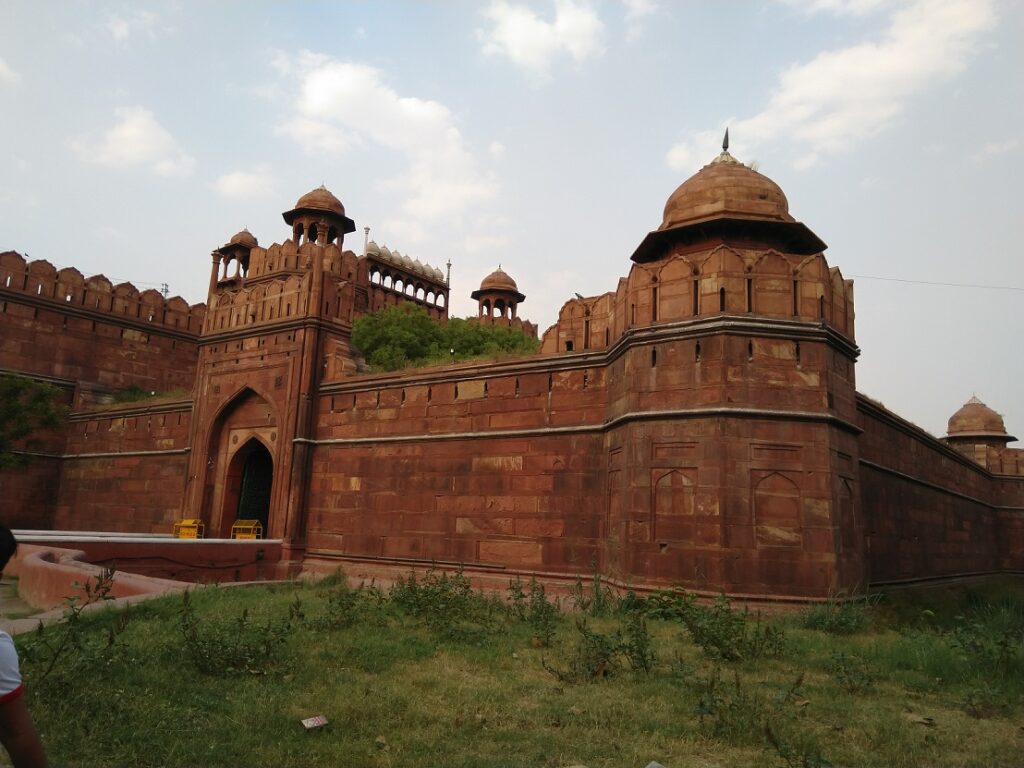
Why chosen as world heritage sites.
Among these around 1300 or more cultural and historical monuments and sites in Delhi. Three most beautiful and attractive monuments had been listed, as the world heritage sites, by UNESCO. Depending on many criteria, estimating the archaeological importance, innovative design and inspiring characteristics of the monuments. Which were the most decisive factors to select these three monuments, as the world heritage sites.
The first two monuments, chosen as the world heritage sites in 1993, and one in the year 2007. The Qutub Minar and complex area, listed in 1993 along with Humayun tomb in the same year. The Red fort became a world heritage site in the year 2007. The time taken to complete their survey and relatively other factors.
To chose any cultural monument as world heritage site, are completely depends upon the institutional exercises. Which undertake such important task is really great work. As such grand institution has to deal with many things to decide about any particular monument. Here we will see some important facts which make these monuments, the world heritage sites. Their archaeological and historical details, the attraction that these monuments of Delhi have. These are the great source of education and inspiration for many visitors.
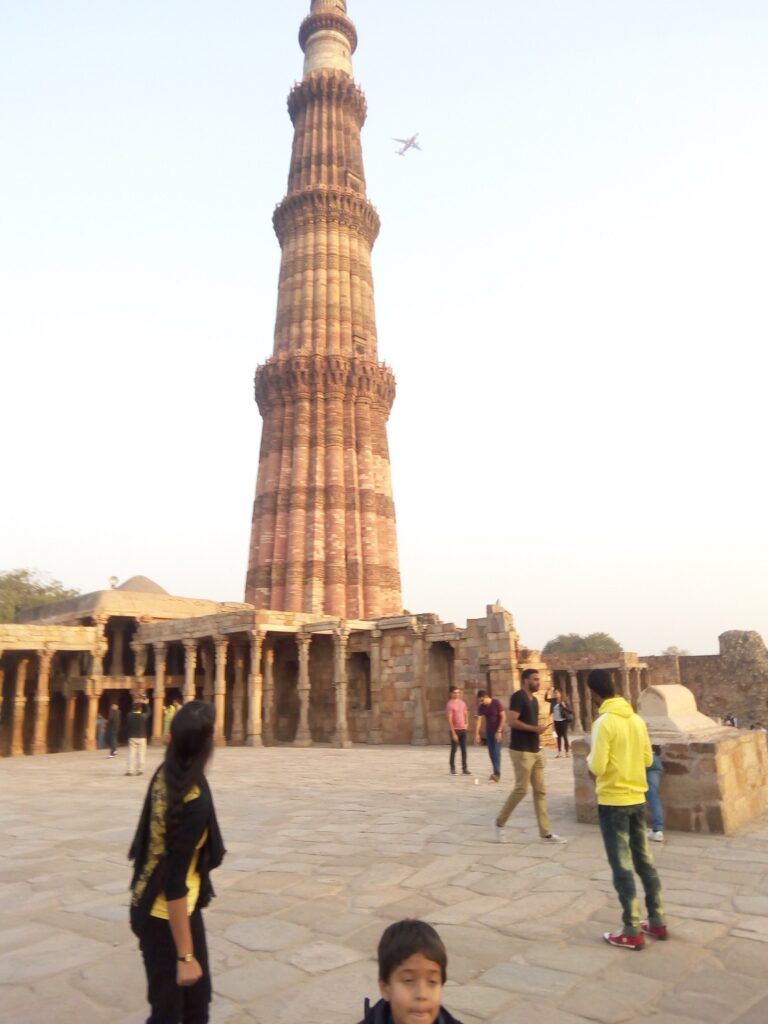
Qutub minar and complex
Delhi has three world heritage sites, the first we are going to see is Qutub Minar and complex. Listed as the World heritage site in the year 1993, for its great symbolic status and richness in many art and architectural values. Qutub Minar is the landmark of Delhi. It is a 12th century tapering tower. It was built for the Muezzin (the crier) to call the faithfuls for the prayer in the mosque.
Qutub Minar is 72.5 meter high. Built with buff and red sand stone with five storey and balconies. The base diameter of the tower is 14.32 meters, on the top it is only 2.75 meter. It has around 379 round spiral shaped staircases inside the tower. Apparently a well planned, construction technique, used for constructing outer wall by carrying the materials from inside on the stairs.
Who built the Qutub Minar
Qutbuddin Aibak was a slave and general of the Army of Muhmmad gauri of Sham. He attacked Delhi’s Chahmana kingdom twice in 1191 and 1192 respectively. Gauri defeated Pritviraj chauhan and captured Delhi in 1192. He returned to his homeland and left the charge of India in the hands of Qutbuddin. In 1206 Qutbuddin Aibak became the first Sultan of India and his dynasty, known as Mamluk (slave) dynasty.
The first storey of the Minar was built by Qutbuddin, the other three storey were completed by his successor and son-in-law Shamsuddin Iltutamish. The construction of Minar started in 1199 after the mosque was completed. The tower or Minar that signify the axis of Islam, is called as Qutab in Persian and Arabic languages.
Aibak started the construction of the Mosque in 1193, and called it, Quwattul Islam Mosque (Might of Islam Mosque), with a lofty screen of five arches facing towards Mecca. Now only four has survived with lots of arabesque, and geometrical designs on the screen. The Central Arch is highest and completely intact in its original form. It is 16 meter high and 6.4 meter wide. The Arabic inscriptions with flower, leaves and stems embedded together and carved on the screen.
Tower association with the Mosque
The Mosque courtyard, surrounded with a cloisters of columns with a dimension of 43 meter long and 33 meter wide. There is a 4th century old Iron pillar of 7.20 meter high. It has an inscription in Sanskrit language about a mighty king Chandra and the pillar is an standerd of Hindu God Vishnu. The other attractions of this complex are the Tombs of Imam Zamin, Shamsuddin Iltutamish and Tomb Of Alauddin Khilji, Alai Minar and Alai ka Darwaza.
Qutub Minar and its complex area with many art, designs, architectural features and ruins of different periods and by different rulers, attract millions of people all round the year. This tapering tower near the Mosque complex and other extended buildings that stands from 12th century. Speaks the truth and honesty in the construction of these buildings.
The decorative styles of intricate designs and carvings on the stones that speak about the hard and consistent work of the architects, designers, engineers, craftsmen, laborers and the rulers. To build a new, innovative and grand building which remained an inspiration for generation to generation.
Humayun tomb and complex
Humayun tomb a world heritage site in Delhi, listed by UNESCO in 1993. Situated near the bank of yamuna river. The modern development completely changed the flow of river. This tomb is the resting place for Humayun 2nd Mughal Emperor of India. The tomb is near the lodhi garden. This garden has some beautiful tombs and Mosque of the Lodi dynasty. Lodi dynasty was the dynasty of the Sultan period that ended in 1526 AD by the first Mughal emperor Babur.
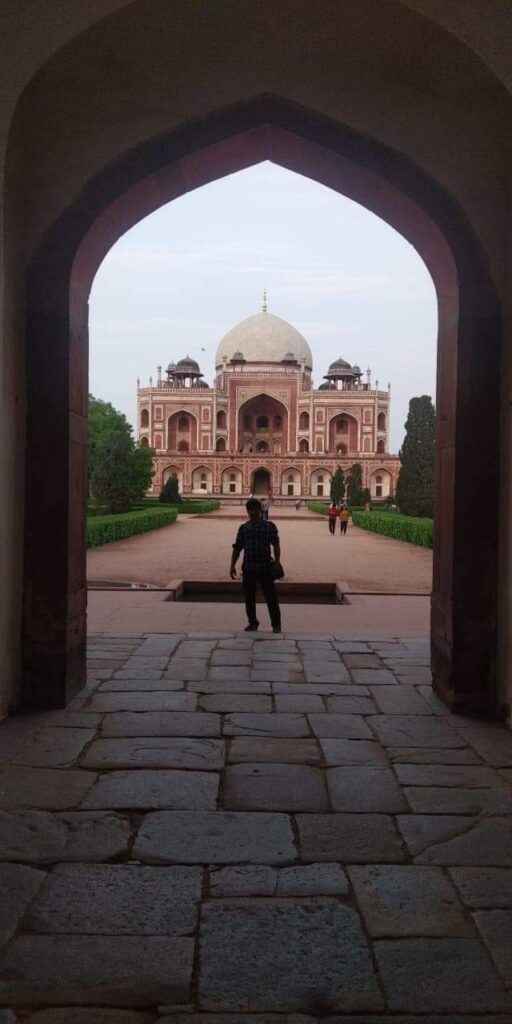
Who was Humayun ?
Babur ruled from Agra and mostly busy in consolidating his new empire in India. After his death in 1530, Babur’s eldest son Humayun became the emperor of India. Humayun ruled continuously untill 1539. Sher Shah Suri an Afghan origin attacked and defeated Humayun in the battle of Chausa. In 1540 in the battle of Kannauj, Humayun was forced to leave Hindustan for 15 years.
Humayun returned to claim his throne from the Suris in 1556 and easily won Delhi. The Mughal empire established again. The same year he died accidentally falling from his Library. He was buried in the Fort, built by Sher shah suri and repaired by Humayun too. Now popularly known as Old Fort, adjacent to Delhi national zoological park.
The garden tomb for the Emperor of India
The construction of the tomb for Humayun started after the nine years of his death in 1565. This tomb was going to be the grandest tomb of that time in the Asian continent. For that purpose the eldest widow of Humayun, known as Haji Begum, took all the necessary steps for the tomb of her beloved husband. His son Akbar the Great had supervised and showed great interest in the construction of the Tomb of his Father.
She went for the pilgrimage visit of Mecca, and returned with many skilled artisans and craftsmen of Arab, Persia and Afghanistan. There is a mosque and chambers around it in ruined condition. Called as Arab Sarai (Guest house), surrounded with high walls and provided with water wells for those craftsmen.
Architectural features and innovative design.
The tomb of Humayun has Indo-Islamic architectural features. This is the first garden tomb example in such a creative design. The chaharbagh means a square garden, divided and sub-divided, in small squares by pathways and water tanks in the center. It is fed with the running channels of water in the middle of the pathways. The pattern is according to the details provided in “The Holy Koran” about the Paradise garden and rivers flowing beneath it.
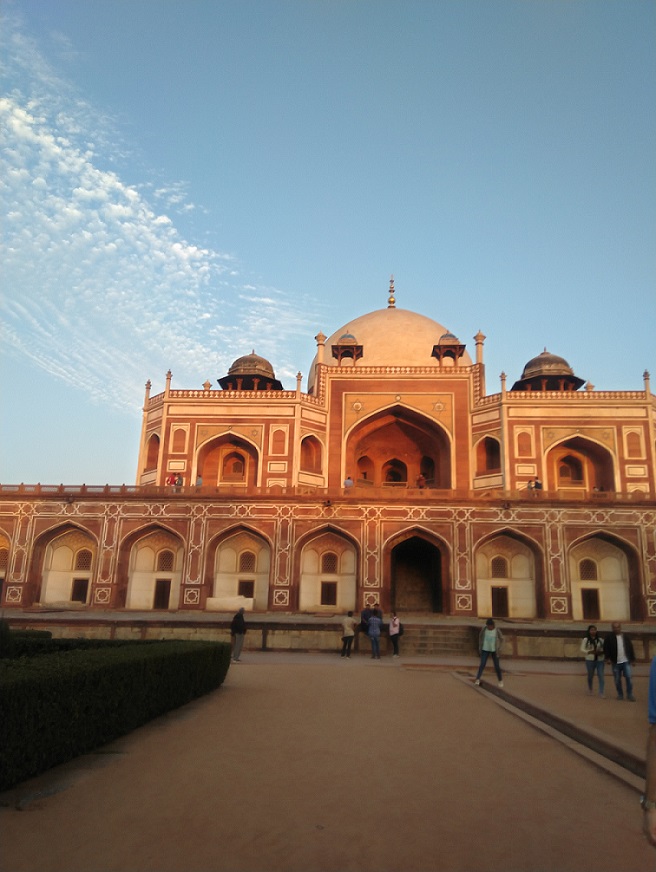
Built in red sand stone and white marble. It has a square platform of 7 meter high with 72 arch in total. The total chambers inside the platform is around 57 with many doors. On the top of the platform the massive and attractive tomb erected. The tomb is an octagonal structure by cutting the corner of all four sides, and provided with double storey window arch on either side. The face of the tomb with big arch in the center and two double story similar arch on its either side. Its impressive design made it one among three world heritage sites Delhi has, a leader in Mughals architectural designs.
The people can only enter from its southern gate. On the top of the tomb, completely covered with white marble and a brass fiel in the center pointing to the sky. The decoration on top with small pillered balcony with glazed tiles add to its beauty. This tomb had started a tradition of garden tomb in the Mughal period. The arch and many decorative designs that were widely copied in later buildings. The culmination of a great garden tomb very similar to Humayun tomb that reach to its zenith in the world famous Taj Mahal after 80 years by Shah jahan.
Red Fort and its complex
Now here we are going to see the impressive Red Fort of Delhi. Delhi has three world heritage sites despite being the third largest city, Delhi enjoys a great historical period. We have seen some facts about Qutub Minar and Humayun Tomb which represented many artistic and cultural development in and around Delhi. The Red fort also represent a great human effort and architecturally developed and inspiring monument of 16th century.
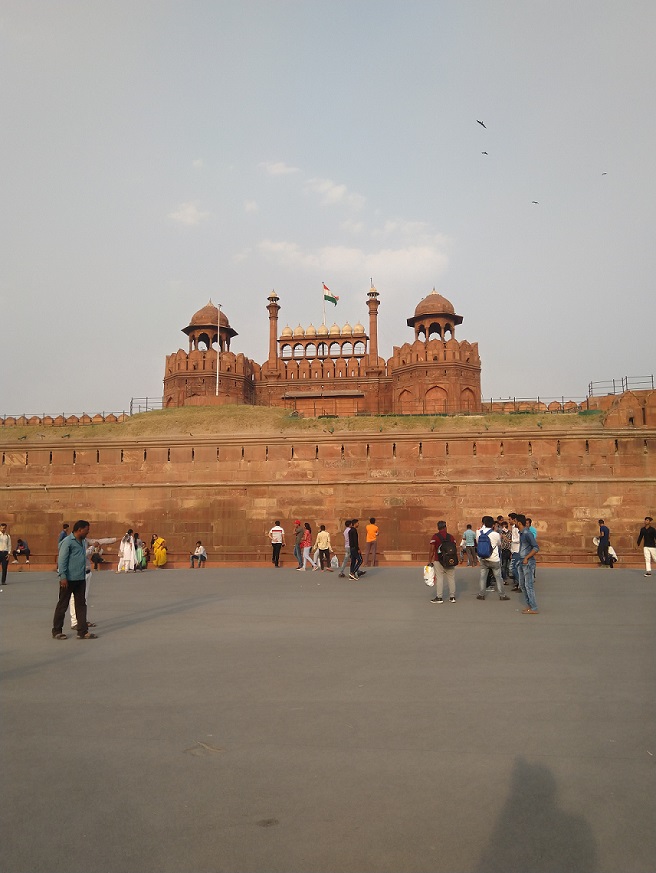
The great Mughal architectural masterpiece. The Red fort is an octagonal citadel. The two sides are longer form eastern and western sides. The face with an imposing gate known as Lahori Gate. The other on the same size and design on the southern side of the fort is called Delhi gate. The Lahori gate facing the city and the main entrance for the visitors. The fort, surrounded with moat and fed with the water of Yamuna River (now dried up).
The fort is completely built in red sand stone and so called as Red Fort. The palaces inside the fort were normally in red sand stone and particularly for the royal family in white Marble. On the eastern side of the fort, the ramparts are not so high as from the city side. It is 18 meter high and the city side is 33 meter high as the defensive of the fort. On the eastern side the palaces are beautifully planned and designed for the emperor.
The greatness of the Red fort
Red fort, listed By UNESCO in 2007 as the world heritage site. Among three world heritage sites Delhi has, the Red fort houses two museums. One museum has mostly the objects, arms, maps and letters of Mughal times. The other has the war memorials of 1857. Kept in the barracks built by British after the revolt. Many apartments and buildings of the Mughals, in the fort for courtiers and ladies got damaged, demolished in the fight and converted by British army.
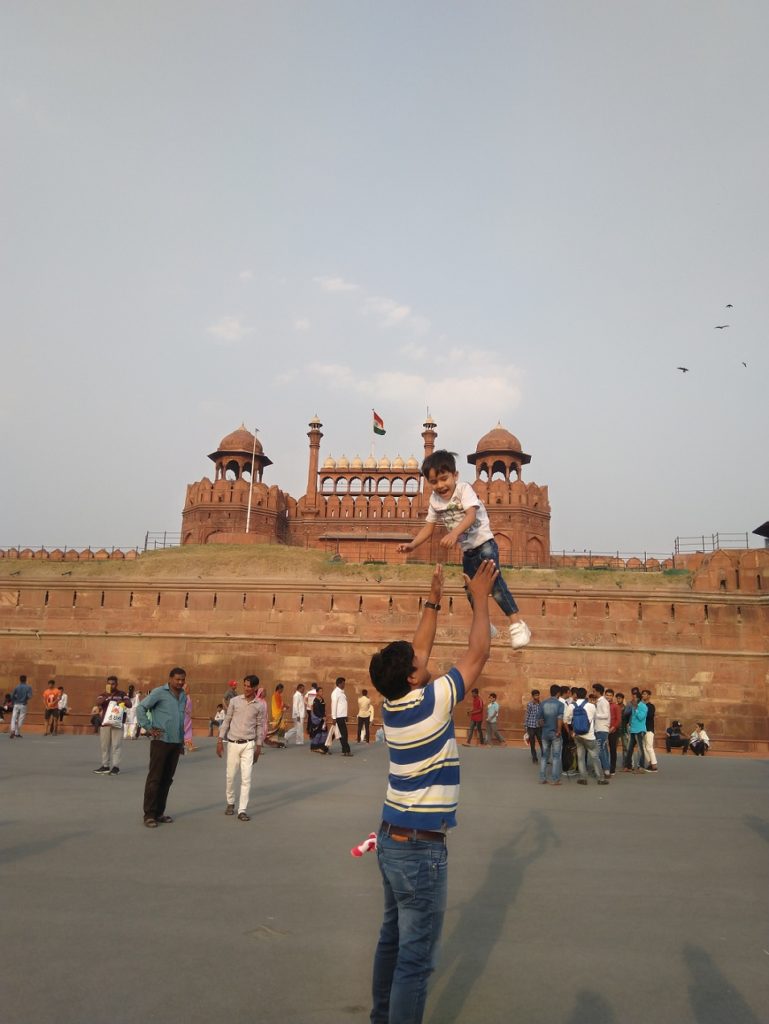
The Royal palaces on the Yamuna bank side (now dried up) are still in good condition and open for the visitors excepts few, eliminated later. The paradise garden of the fort and a running water channel, flowed in the middle of all these palaces with fountains and water tank. They are the exceptional art work of the Mughals. Glass mosaic work and engraved semi precious stones on marble, are all done in large scales. The fort name was Qila-e-Mubark and Qila-e-Maula in new capital city of Shahjahnabad. Now popularly known as Old Delhi.
Its impressive artwork and great history from Mughals till independence of India, made it worthy for the world heritage site. The area comprises in its periphery is about 2.41 kilometres. 900 meter long on eastern and western side and 550 meter wide. With Lahori gate and chhatta chowk flanked roof corridor, take you directly to drum house and Diwan-e-Aam (public audience hall). There is the Throne of Shahjahan with impressive artwork of pillared arch.
Enjoy these three world heritage sites of Delhi in India. It’s a great pleasure to find their splendor.

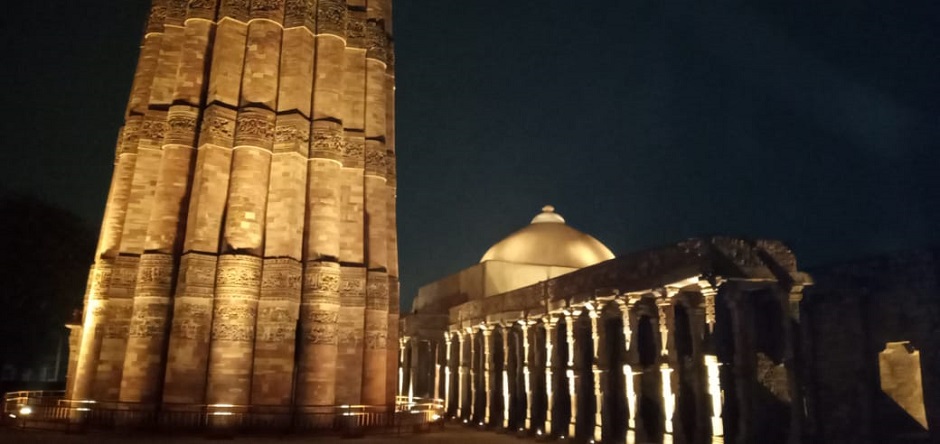
Very useful information provided
Thank you for your kind consideration and nice comment.